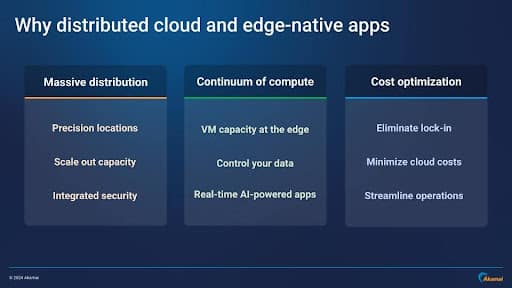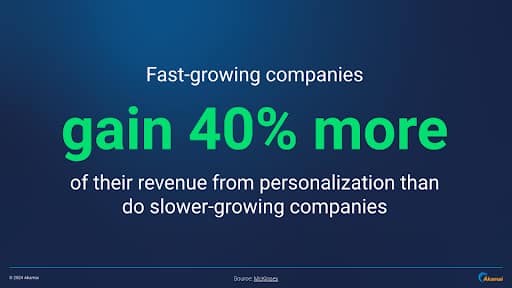How Distributed Cloud Computing Meets Modern User Demand
In a recent webinar organized by Virtualization & Cloud Review, veteran technology journalist John K. Waters and Akamai’s Ari Weil discussed the evolving landscape of cloud computing, emphasizing the shift toward distributed cloud computing and its significant impact on modern digital transformation strategies. This blog post is a recap of that webinar.
The rise of distributed cloud computing
Distributed cloud computing is emerging from public cloud providers as a pivotal technology by addressing the growing demand for personalized, secure, and efficient digital experiences. Unlike traditional cloud models that centralize resources, distributed cloud computing focuses on dispersing resources to specific data center locations, which enhances performance, scalability, and compliance with local regulations.

Benefits over traditional cloud computing models
The advantages of distributed cloud computing include low latency, cost optimization, and the ability to meet users' demands for instant, personalized services. By leveraging cloud-native principles and application programming interfaces (APIs), businesses can achieve greater flexibility and efficiency, ensuring that distributed cloud services are scaled and tailored to demand (wherever it exists) at edge locations across the globe.

Challenges and strategies for a transition to distributed cloud computing
Transitioning to a distributed cloud model presents its own set of challenges, including security concerns, data privacy, and the complexity of managing workloads across multiple clouds. Adopting a strategic approach that prioritizes security, visibility, and portability ensures a seamless transition of your IT infrastructure.

The role of AI in a distributed cloud model
Artificial intelligence (AI) and machine learning play a crucial role in enhancing the capabilities of a distributed cloud environment. By automating operations and improving decision-making processes, AI tools can help businesses optimize their cloud infrastructure and deliver more personalized user experiences.

Success stories that highlight the impact of distributed cloud computing
Several businesses have successfully harnessed distributed cloud computing to enhance their operational efficiencies and customer satisfaction.
One of our major credit card provider customers significantly improved their Apple Pay registration processing and reduced SLA violations from 30%–40% to near zero by using Akamai’s global network.
AdTech also benefited greatly from Akamai’s distributed cloud services, which brought computing resources closer to users, cutting ad delivery times by up to 80% and reducing pricing by 90%.
Another customer that used artificial intelligence for a customer support chatbot experienced enhanced performance and faster, personalized support by localizing data and reducing latency.
These examples underscore the practical benefits and transformative potential of distributed cloud computing across those industries and others, such as media, gaming, and software as a service (SaaS).

Project Cirrus: A case study in cloud optimization
Our own initiative to migrate key workloads to our own cloud architecture, known as Project Cirrus, achieved similar impressive results. This strategic move led to a 40% reduction in costs in the first year, with projections to reach 70% cost savings in the second year.
Additionally, Project Cirrus delivered an 80% reduction in data pipeline round-trip times and a 70% increase in overall application performance. Our own use case highlights the significant operational improvements and cost efficiencies that can be realized through strategic cloud optimization.
To learn more about how we gained control of our cloud costs, download our white paper How Akamai Slashed Its Public Cloud Costs by 40%.

Looking ahead: The future of distributed cloud computing
As we look to the future, distributed cloud computing is set to become even more integral to business strategies, driven by the need for real-time, personalized services. When exploring distributed cloud solutions from public cloud providers, it’s important to align cloud strategies with long-term business goals and stay adaptable in the face of technological advancements.
Distributed cloud computing is meeting the demands of today's digital landscape and modern applications. As businesses navigate the complexities of digital transformation, embracing distributed cloud computing will be key to achieving scalability, security, low latency, and personalized user experiences.
To learn even more, watch the entire webinar, which is available now on demand.



